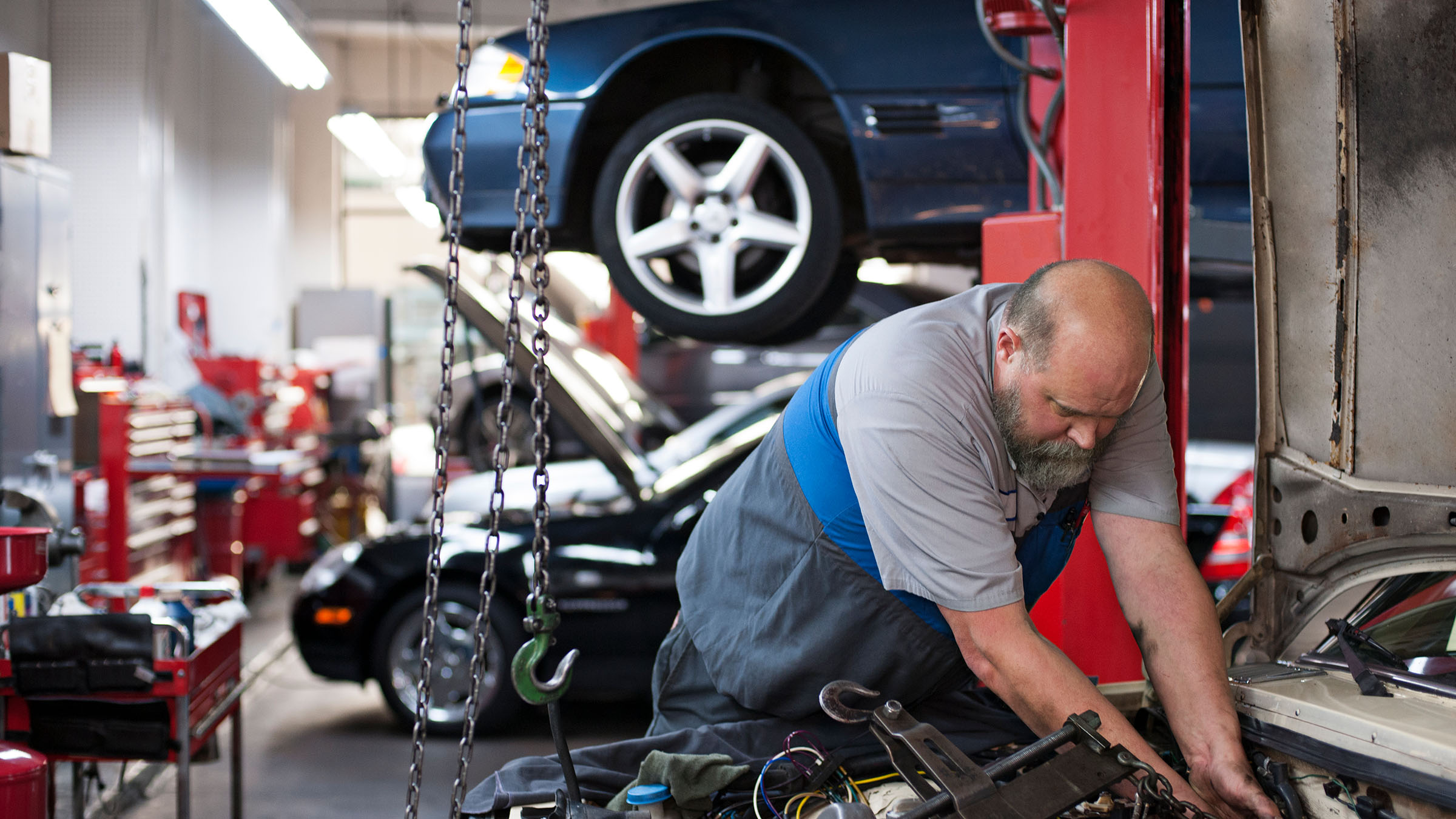For many households, unexpected and unbudgeted expenses are a constant threat to financial stability. In recent years, costly vehicle repairs have become a growing financial burden.
“If my car breaks down, I have no money to fix it,” a Montana woman shared in a recent Minneapolis Fed survey of workers. “If there is any kind of setback, I am screwed.”
She is not alone. Minneapolis Fed surveys of both workers and businesses in the Ninth District have spotlighted the high and sometimes unaffordable cost of vehicle repairs over the last year.
“Our customers are being hit from both sides. Costs are skyrocketing, and wages are staying the same,” commented the owner of an auto repair shop in South Dakota.
The cost of vehicle repairs is hard to ignore. Overall inflation, as measured by the consumer price index, slowed to 3.7 percent over the year in August—down from its 9 percent peak in 2022. The cost for vehicle repairs, however, had risen 17 percent, and the cost of maintenance, such as an oil change, was up 9 percent over the same period (Figure 1).
These heightened costs have added pressure to vehicle owners who have already had to deal with widespread inflation in other related expenses, such as gas and insurance. As the auto repair industry continues to adapt to new challenges in an evolving economy, it’s unclear when these cost increases might begin to ease.
Why are costs so high?
A combination of long-term factors and recent shocks to the economy have contributed to the jump in auto repair and maintenance costs today. For one, supply chain disruptions and production constraints during the pandemic dramatically limited the supply of new vehicles entering the market, creating a cascade of problems for the industry.
With new cars in short supply, they also became much more expensive. As a result, used car sales skyrocketed after 2020, and more people held on to their existing cars, which led to a record high for the average age of vehicles on the road this year.
Older cars often need more repairs, so higher demand for repair services followed, according to Linden Wicklund, executive director of the Alliance of Automotive Service Providers of Minnesota.
Given the high cost of a new vehicle today, people have found that “financially, it makes more sense to do enormous repairs on their existing cars that they wouldn’t have thought about previously,” said Wicklund. Increased technology in cars over the last decade is another compounding factor, she added. “Cars these days are rolling computers. If you're fixing something that’s more complex, they’re going to need to keep it in the shop for longer, which gets more expensive.”
Amid higher demand for repairs, supply chain disruptions during the pandemic also made finding vehicle parts a major challenge for repair shops. And with more people buying or holding on to used cars, “there are not enough used cars entering the salvage market where repairers get used parts, so then you do end up with more part shortages,” Wicklund explained.
On top of those disruptions, the auto repair industry has not been spared from tight labor market conditions in recent years. Across the Ninth District, employment in automotive technician and service occupations declined 2 percent between 2019 and 2022, according to government data, even as demand for these services increased.
“Employee shortages are affecting our ability to take on more work,” commented the South Dakota auto repair shop owner. “We are taking less appointments this year due to lack of help.”
An aging workforce and typically lower pay for new hires relative to other trades is partially to blame, according to Wicklund. “A lot of shops say they are losing employees to industries that pay better at the start,” she explained. “So, some shops are giving very large raises to try to keep employees. Some will up their prices to customers and give most of the increase back to their employees.”
Workers feeling the impact of high repair prices
Unusually high repair and maintenance costs put even more stress on people’s budgets. “We will not be able to afford to repair or replace our aging vehicle,” shared a Minnesota office support worker. In fact, in a recent Minneapolis Fed survey of workers,1 it was the top financial concern for respondents—above expenses such as housing costs and health care bills (Figure 2).
For those who depend on their vehicles to get to work, there is often more than just money at stake. “Every time a car breaks I need to spend an outrageous amount of time and money to fix it,” shared a Wisconsin respondent. “If I don’t have a car I don’t have a way to get to work until it is repaired and it burns up all my sick days or vacation.”
Among survey respondents who depend on their vehicle to get to work, 15 percent said a vehicle repair is currently disrupting their transportation needs and are concerned that they will not be able to afford the cost. The owner of a Wisconsin janitorial business recently told the Minneapolis Fed that “multiple staff [are] out with vehicle issues.”
Increased wait times for services add even more pressure. The average time it takes to simply get an appointment has increased from 1.8 days in 2021 to 4.8 days in 2023 for most vehicles, according to a J.D. Power study. The delay is partially the result of labor and parts shortages.
High costs and long wait times may push people to delay auto maintenance and repairs, which can lead to more expensive repairs down the road. “I sometimes have to wait to do car maintenance because we have other more impending needs,” a South Dakota worker shared.
The South Dakota auto repair shop owner noted that customers often have to make tough choices when total repair costs get too high. “We see people waiting to purchase tires and batteries due to cost increases,” they commented.
Some of the challenges the auto industry has faced over the last few years have begun to ease: The supply of new vehicles has slowly improved, as has the availability of certain vehicle components. However, various parts shortages persist, and an ongoing strike of auto workers could bring additional challenges as production is disrupted at major auto manufacturers. These compounding issues may continue to keep wait times long and repair prices high, delaying relief for vehicle owners.
Endnote
1 These survey results were not obtained from a random sample of the general population but from a growing list of worker contacts who have shared their experiences with the Minneapolis Fed. They should be interpreted as a systematic collection of anecdotes and qualitative insights about individuals’ experiences rather than a quantitative estimate. At the time this article was written, the Minneapolis Fed had received 584 responses over a period of four months.
Haley Chinander is an analyst and writer at the Federal Reserve Bank of Minneapolis. In her role, Haley tracks and reports on the Ninth District economy with a focus on labor markets and business conditions. Follow her on Twitter @haleychinander.
Erick Garcia Luna is a Minneapolis Fed regional outreach director. In this role, he focuses on gathering and analyzing economic intelligence on the regional economy to help inform the work of the Fed. Follow him on Twitter @ErickGarciaLuna.







